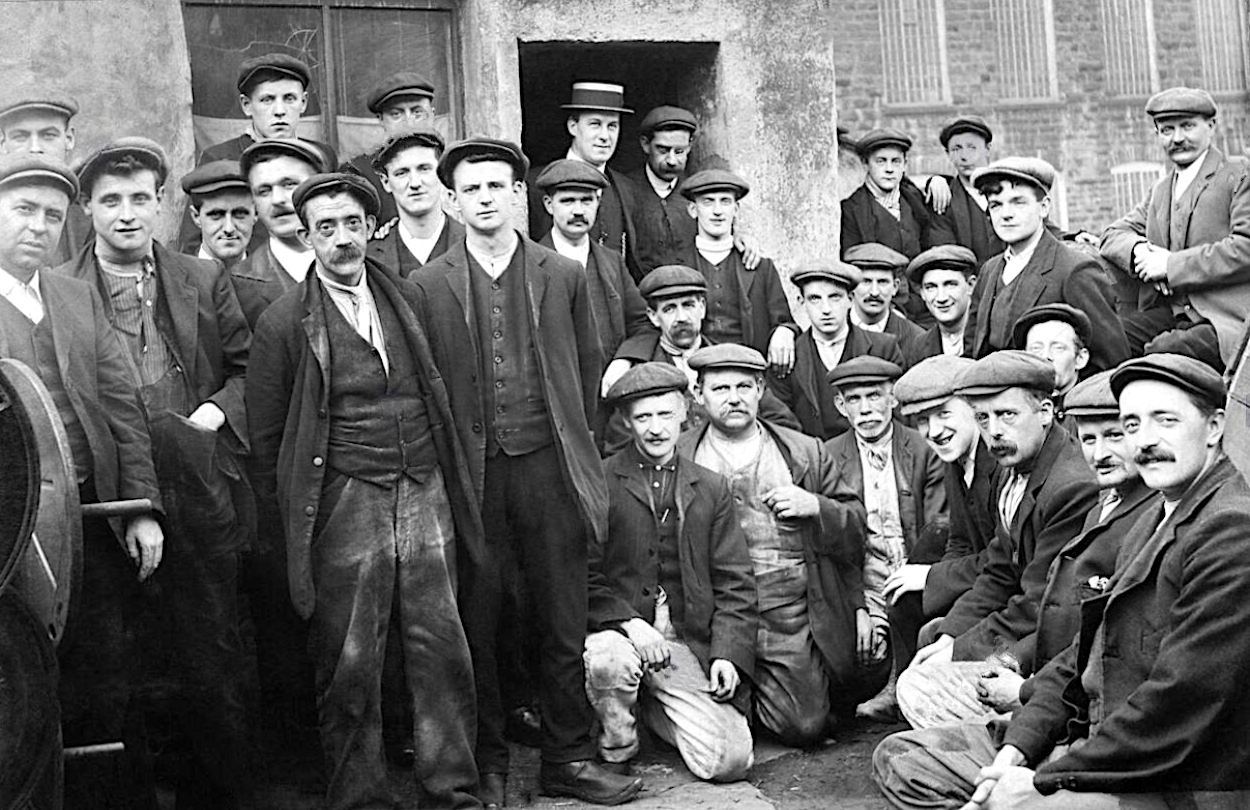Self Help Clubs
In the early 1900s there were no old age pensions, unemployment benefits or health insurance. The Government didn't accept responsibility for poverty or hardship existing amongst its citizens. Individuals were responsible for their own lives and welfare. Any form of social care was unpopular amongst the wealthy since it meant a rise in taxes.
The view was that poverty arose from idleness, drunkenness and other moral weaknesses amongst the working classes. Individuals were expected to get themselves out of poverty through hard work and education.
Surveys by Charles Booth and Seebohm Rowntree around 1900 indicated about 30% of the population lived in poverty and earnings below about £1 a week ensured a life of hardship. The average agricultural labourer, one of the most common occupations in St Ives, typically earned about £1 a week.
If the main wage earner in a family died or was unable to work, the whole family could end up in poverty. Grants of money for food, clothing and fuel were available. Funded by the poor rate tax made on the town's property owners, these carried a great social stigma. In extremis, the workhouse loomed. Read on to learn about the Self Help Clubs formed in St Ives to protect workers.
Self Help Clubs
Also called Share Out or Slate Clubs, they became popular in the 1800s to provide security for working men. Beginning in January each member paid in a weekly amount, from 3d to 6d. If unable to work through illness or injury, typically 4 or 8 shillings a week was paid from the club fund for 8 weeks, depending on circumstances. If a member died, the widow received money to assist with funeral expenses. Just before Christmas the remaining surplus was distributed equally amongst members.
Although the weekly contribution sounds small, often it took up most of the labourer's spare money. At times the family went without to keep up their contributions.
There was an inbuilt aversion to accepting older members because they were more likely to fall ill or die. Clubs also had an inbuilt limitation of life span. As members grew older year by year, the claims increased to the point where contributions didn't cover outgoings. Well before that point, younger members might leave to form their own club. In the weekly article 'Talks on Health' in the Hunts Post, St Ives' Dr Grove wrote in 1915 of the ill health caused through worry that the Self Help Club might go broke. (Hunts Post 1 Jan 1915).
Self Help Clubs were not covered by any legislation. Effective administration was dependent on the ability and honesty of officials. 'With the speed of a Slate Club treasurer absconding on Christmas Eve' was an occasionally used proverb. Cases of theft were few and far between. Club officials and members were so socially interconnected, embezzlement necessitated leaving one's community for good.
Clubs were locally run, typically attached to a public house or occasionally a shop or other type of club. In Cambridge and the surrounding area, of 189 licensed premises, 61 ran Self Help Clubs with a total membership of 2,664. Of these, 43 required a weekly contribution of 6d, the other 18 a contribution of 3d. The landlord was either secretary or treasurer in 43 of the clubs.
St Ives's Self Help Clubs
There were 650 members of Self Help Clubs in St Ives. The town's population, men, women and children, was about 3,000, roughly 750 households. So most St Ives working men were members of a Self Help Club.
To discourage shirkers from taking advantage, one Club rule was a curfew on claimants going out after 6.00pm whilst being paid sickness benefit. Not being able to partake in the main social activity, going to the pub, proved too great a sacrifice for some. Another 'Talks on Health' article in 1915 recorded the powerful effect this rule had on recovery from a variety of injuries and diseases during the festive season. (Hunts Post 8 Jan 1915).
The biggest Self Help Club was run by the Oliver Cromwell pub, with a membership of up to 180. They certainly knew how to enjoy themselves. In 1920 the pre-Christmas payout was celebrated with an annual dinner, publican Arthur How providing an 'excellent repast' for 100 members and guests. The local Member of Parliament presided. Guests included the Mayor and several prominent businessmen. Members provided entertainment, including a comic musical monologue, various songs and the inevitable speeches.
The payout was rather good too. After expending over £38 in sickness and death benefits, each member received back just over £1, equivalent to about £50 today. (Cambridge Independent Press 24 Dec 1920).
Below is a list of the licensed premises in St Ives that ran a Self Help Club.
Cow and Hare (64 members)
Black Bull (53 members)
Greyhound (37 members)
Liberal Club (57 members)
Oliver Cromwell (180 members)
Parrot Hotel (143 members)
Robin Hood (141 members)
You can read more on St Ives' Self Help Clubs by clicking newspaper cuttings.



No comments:
Post a Comment